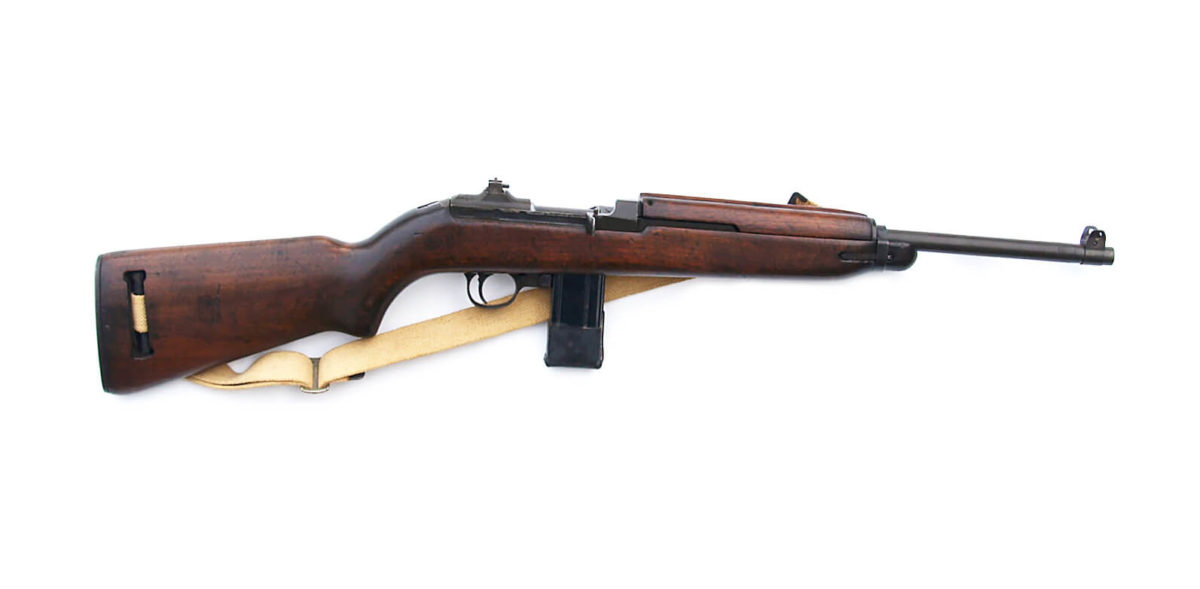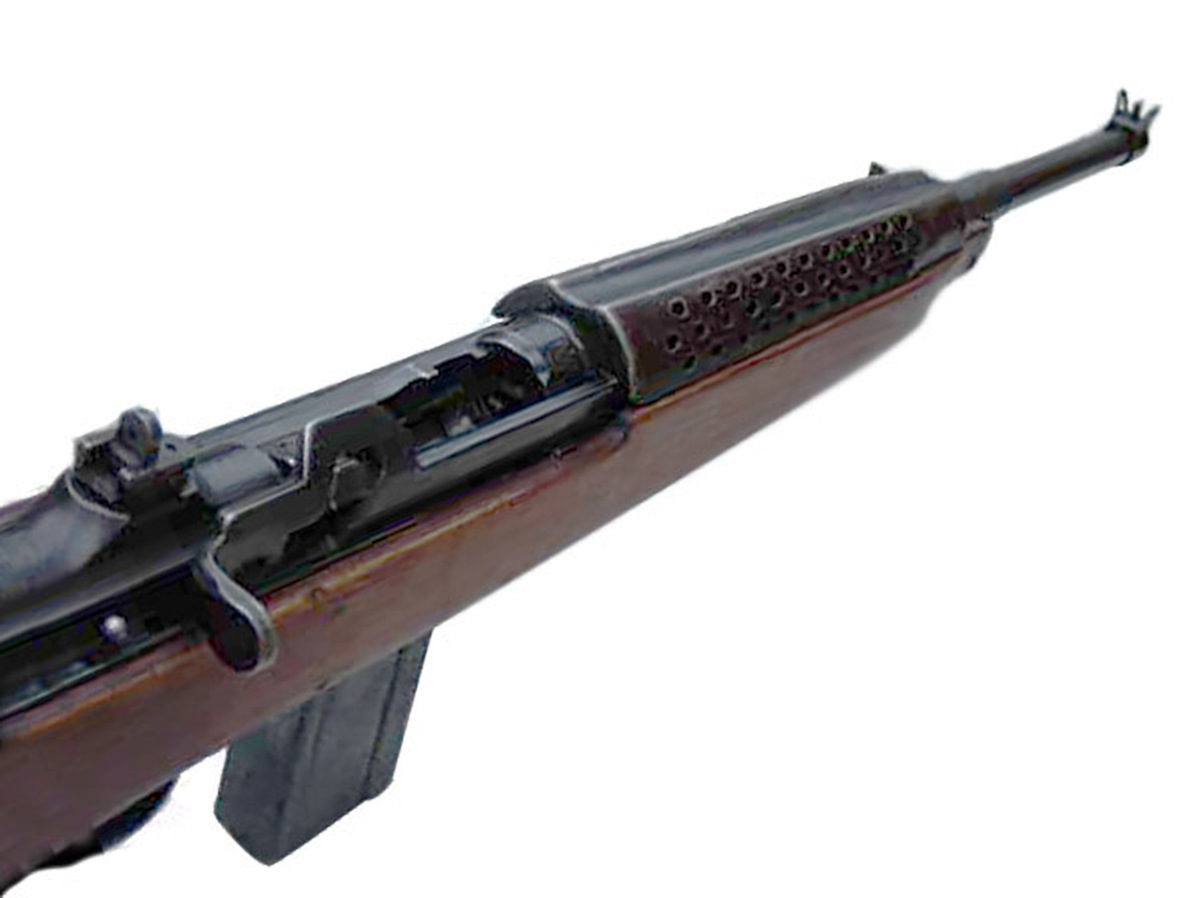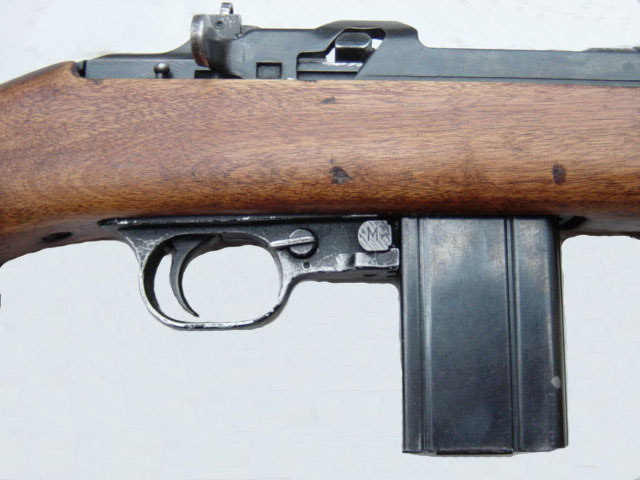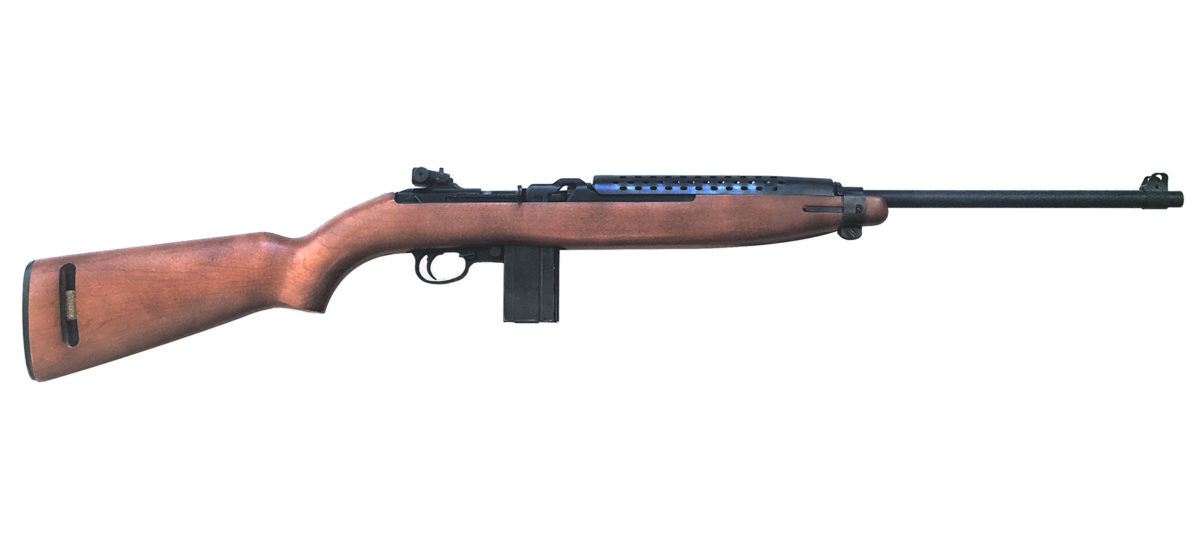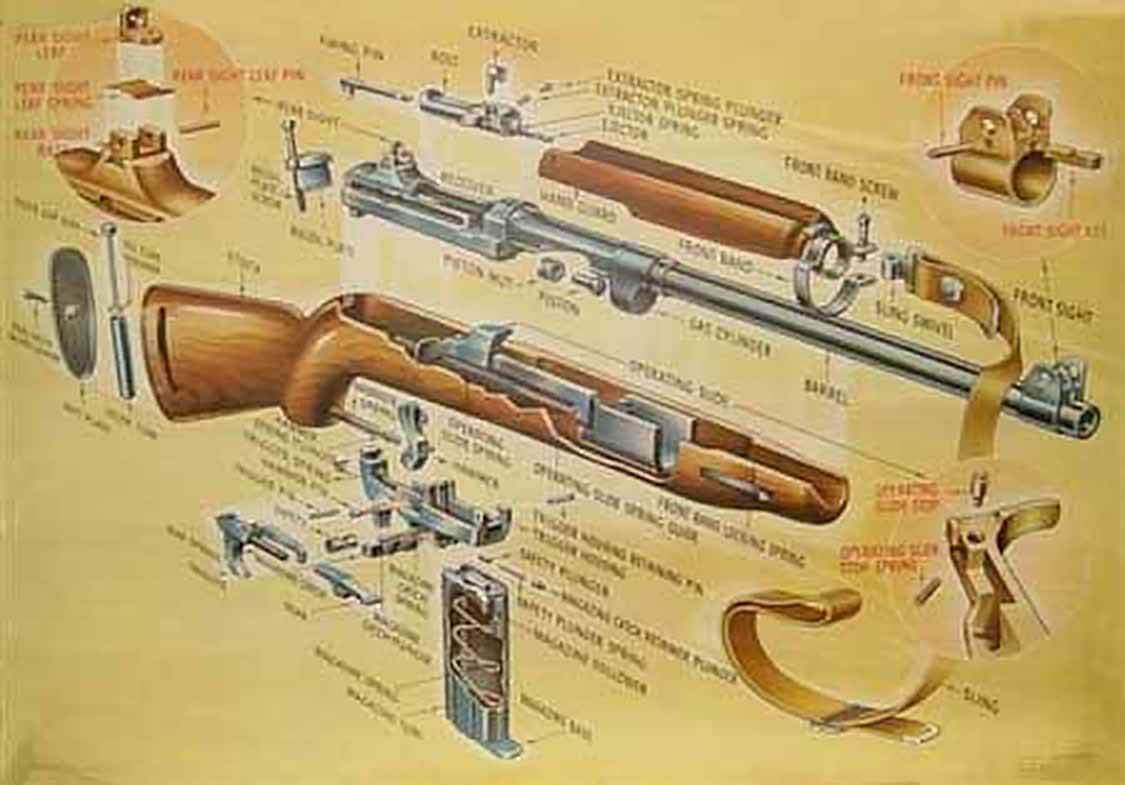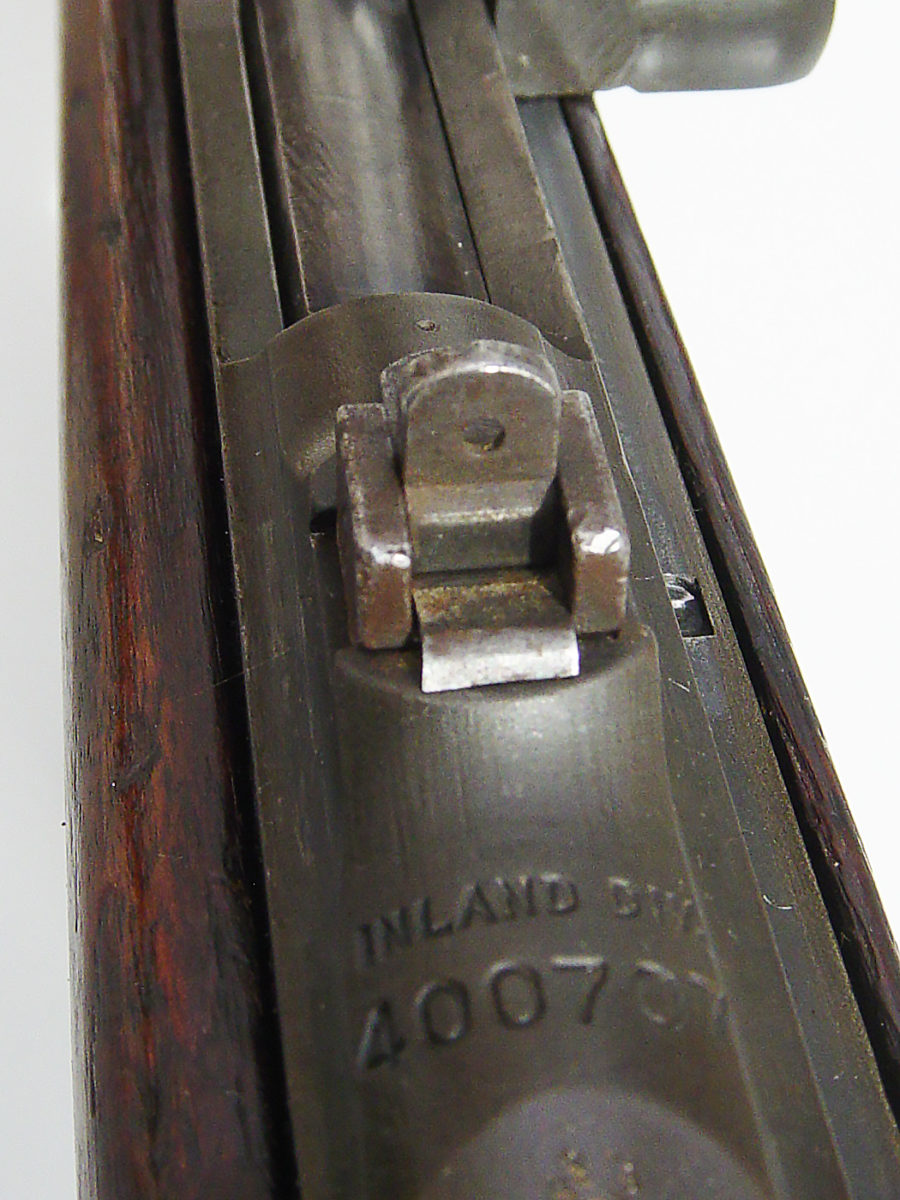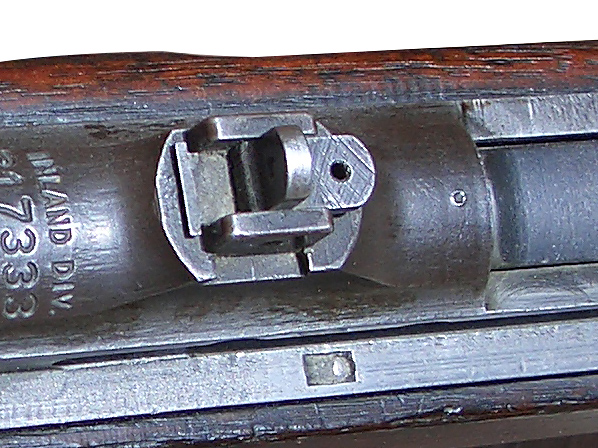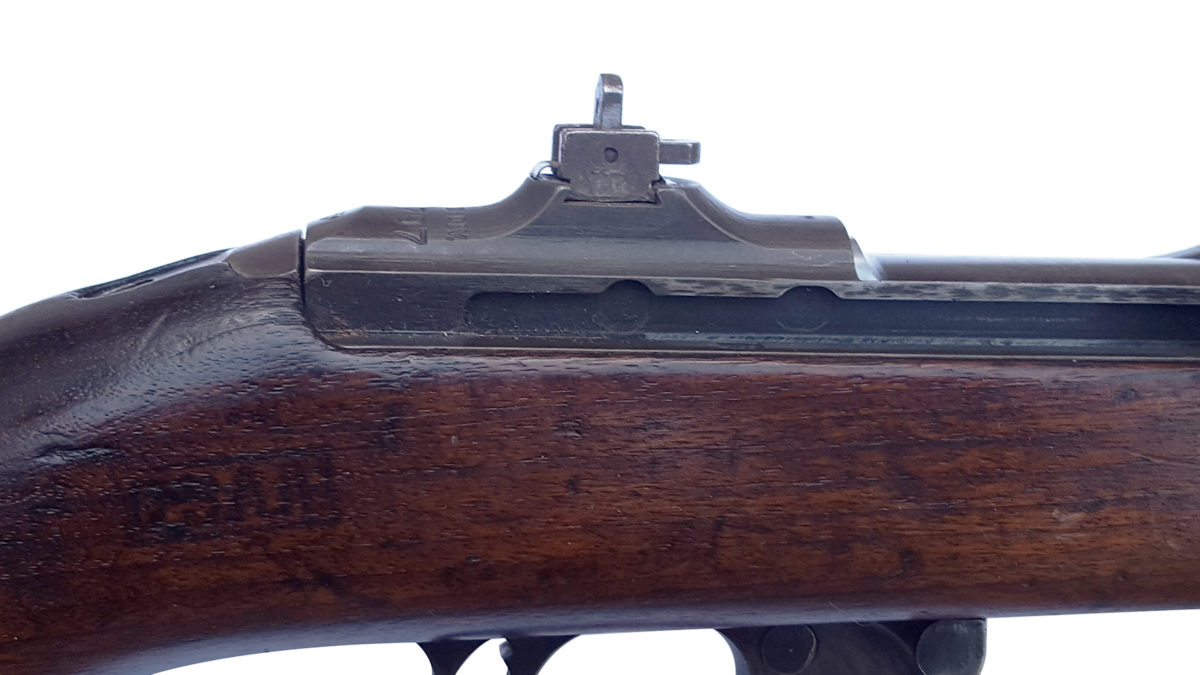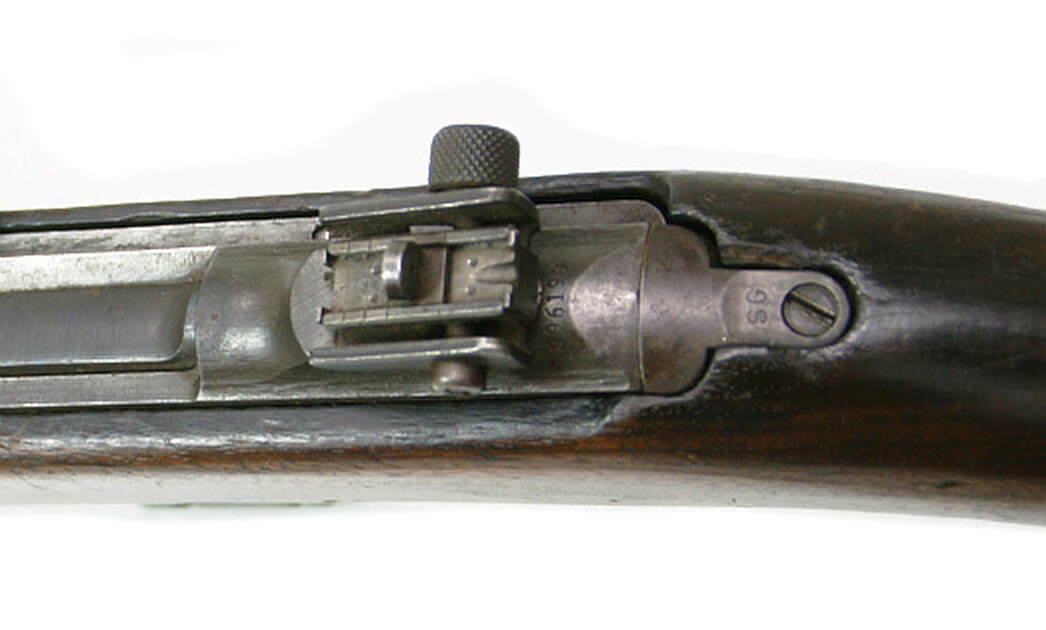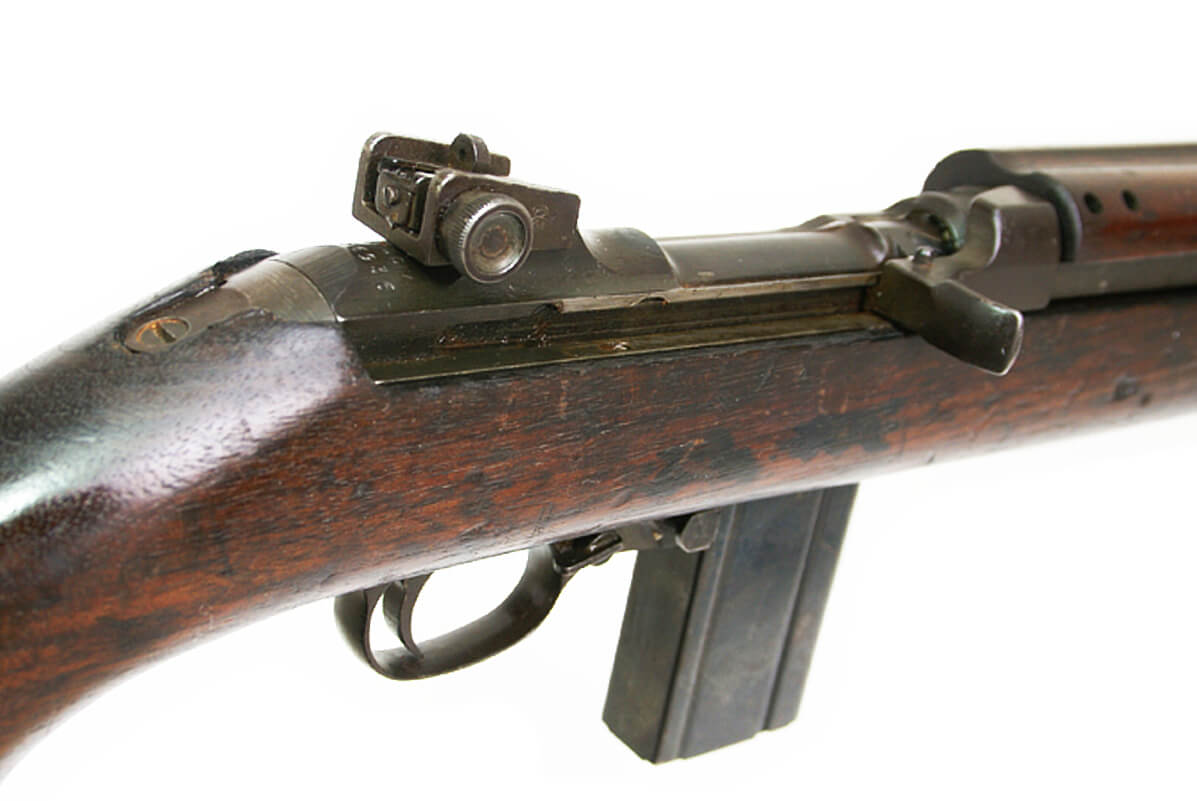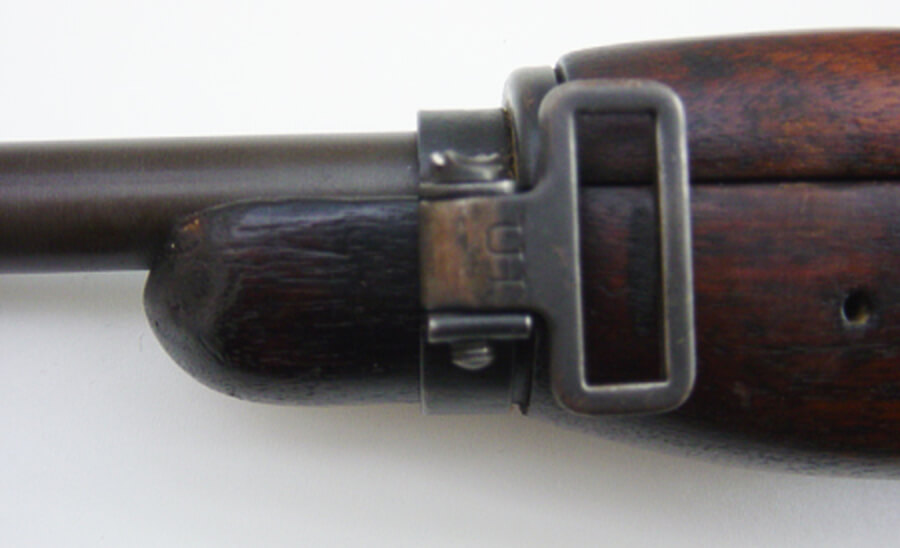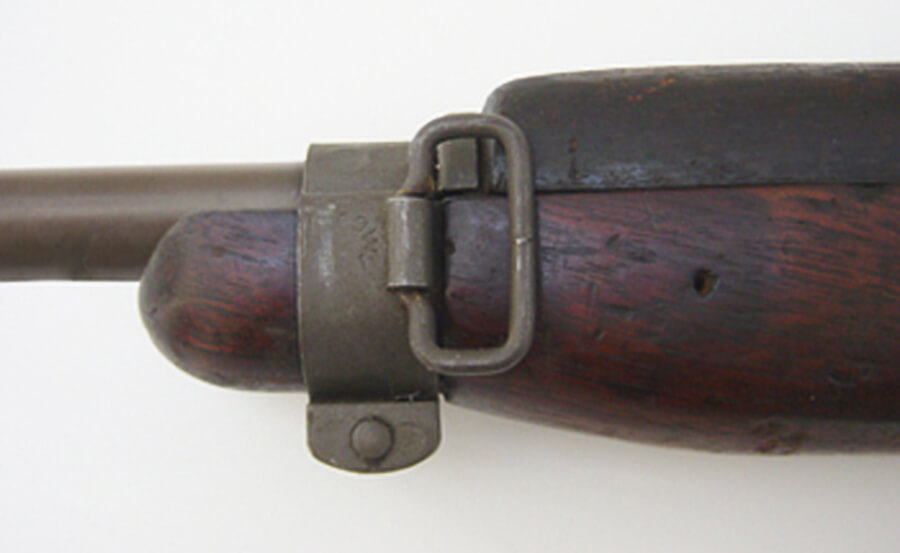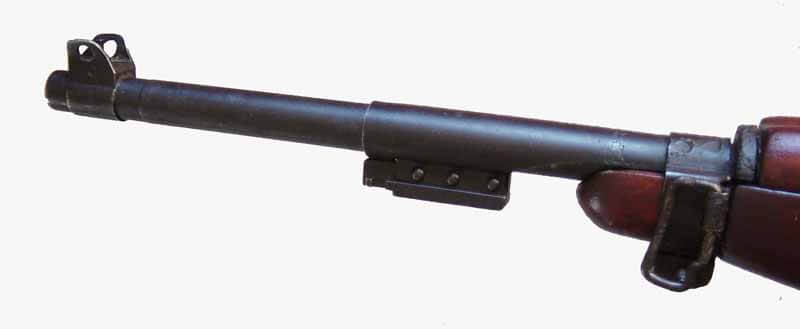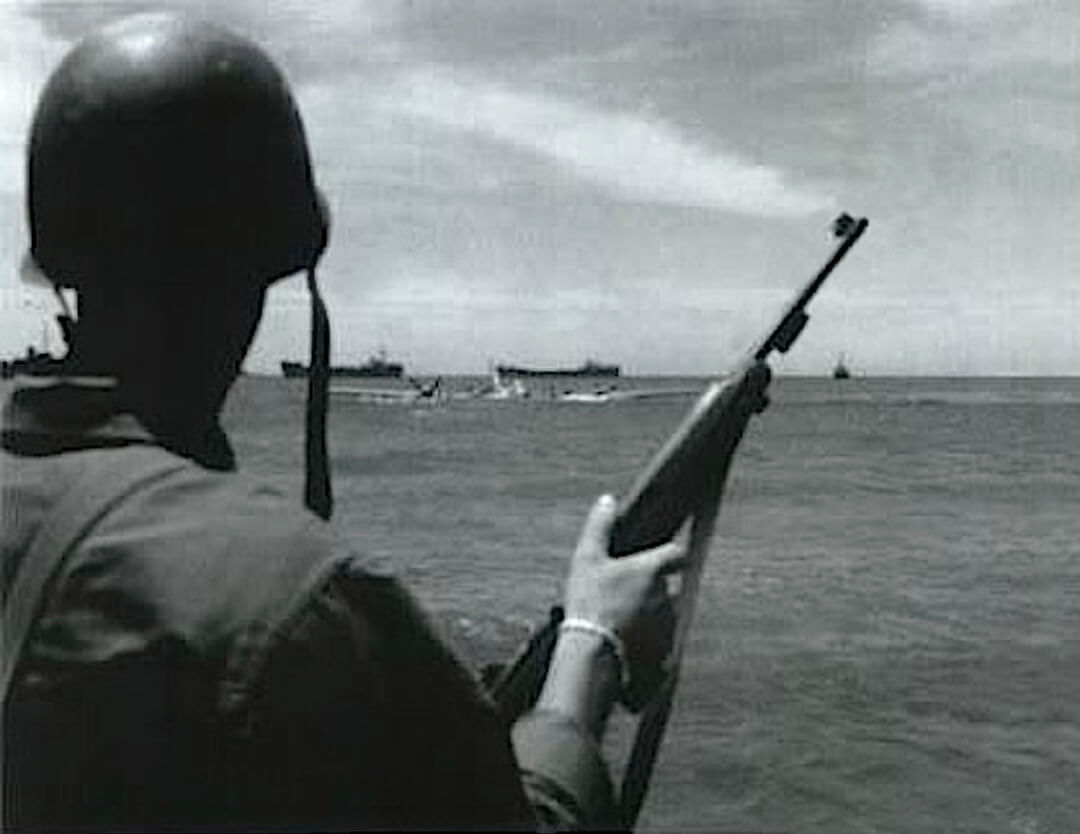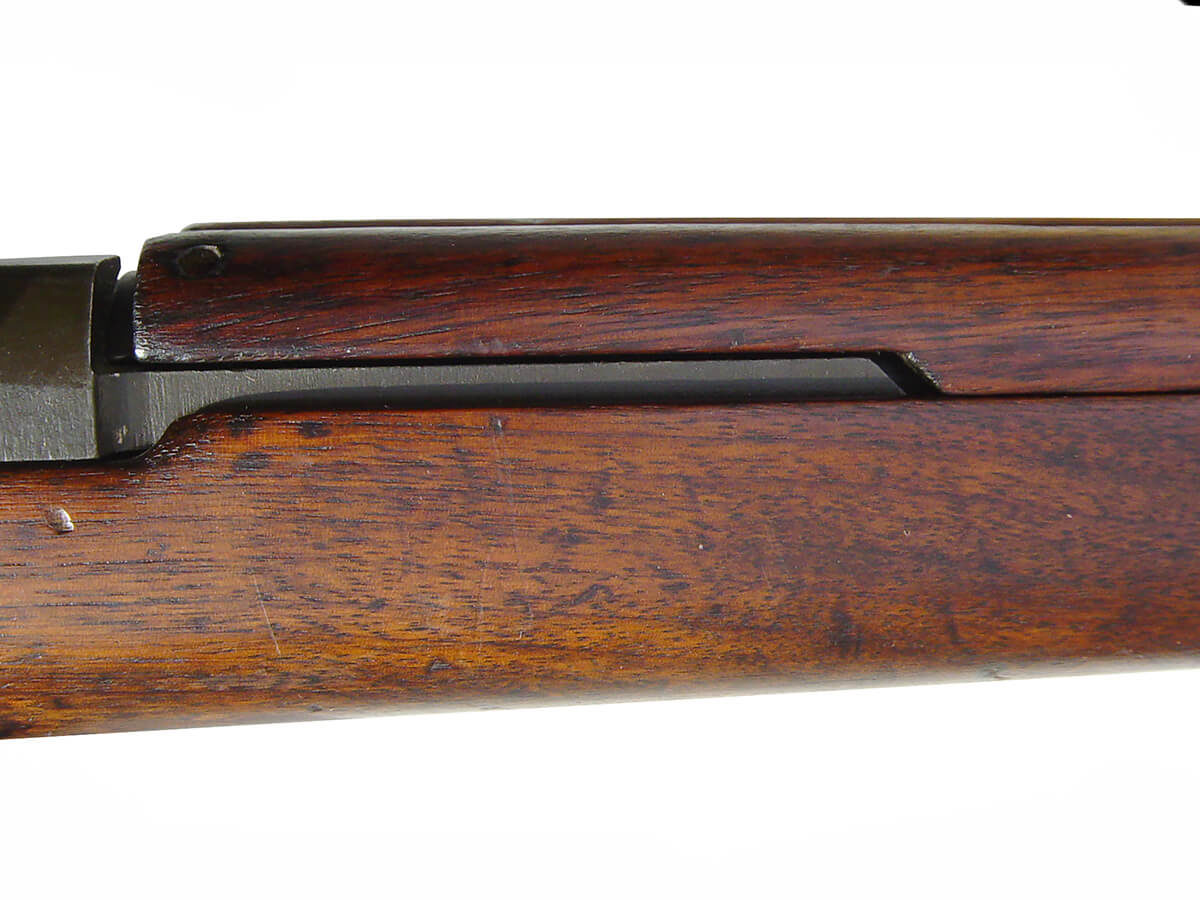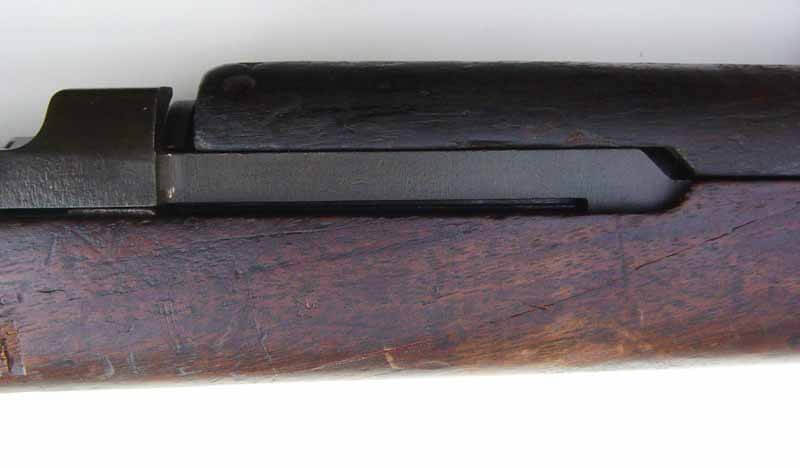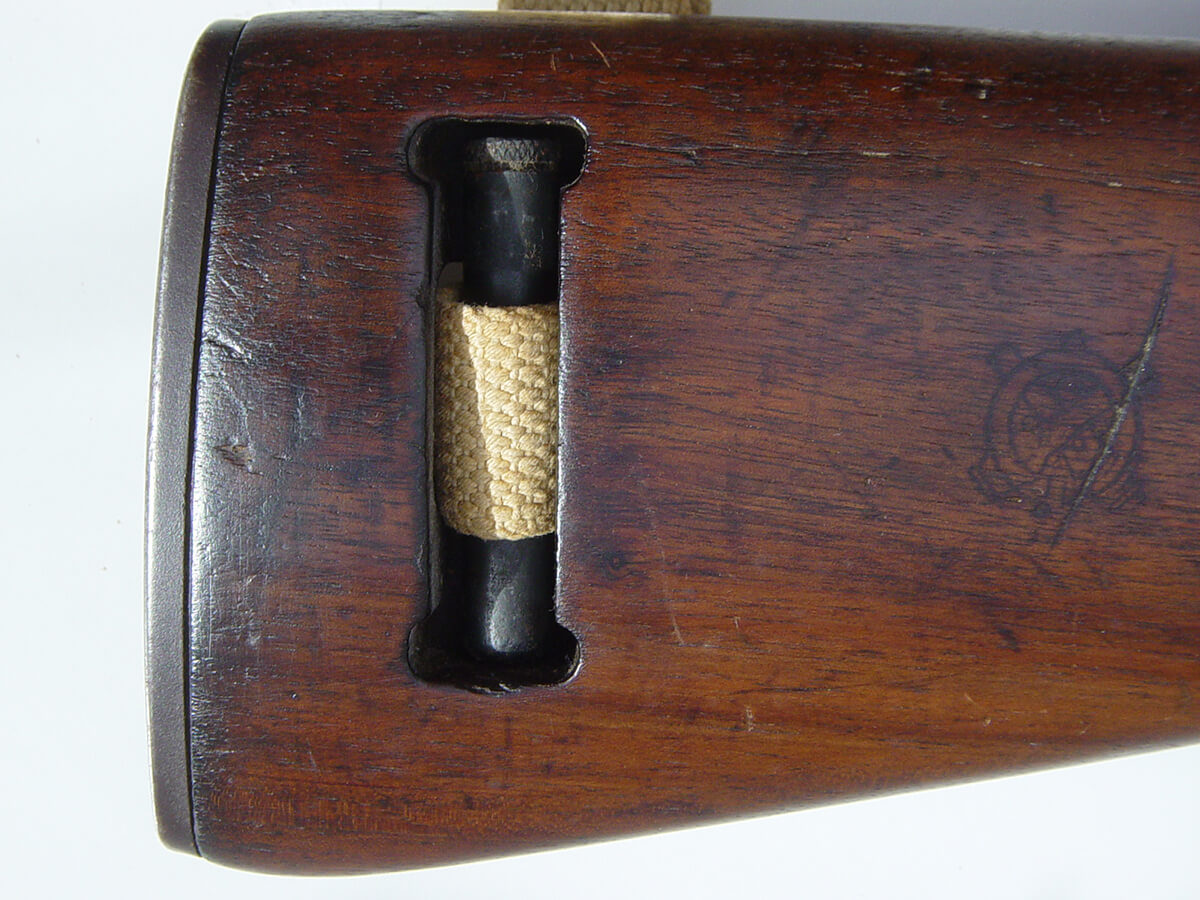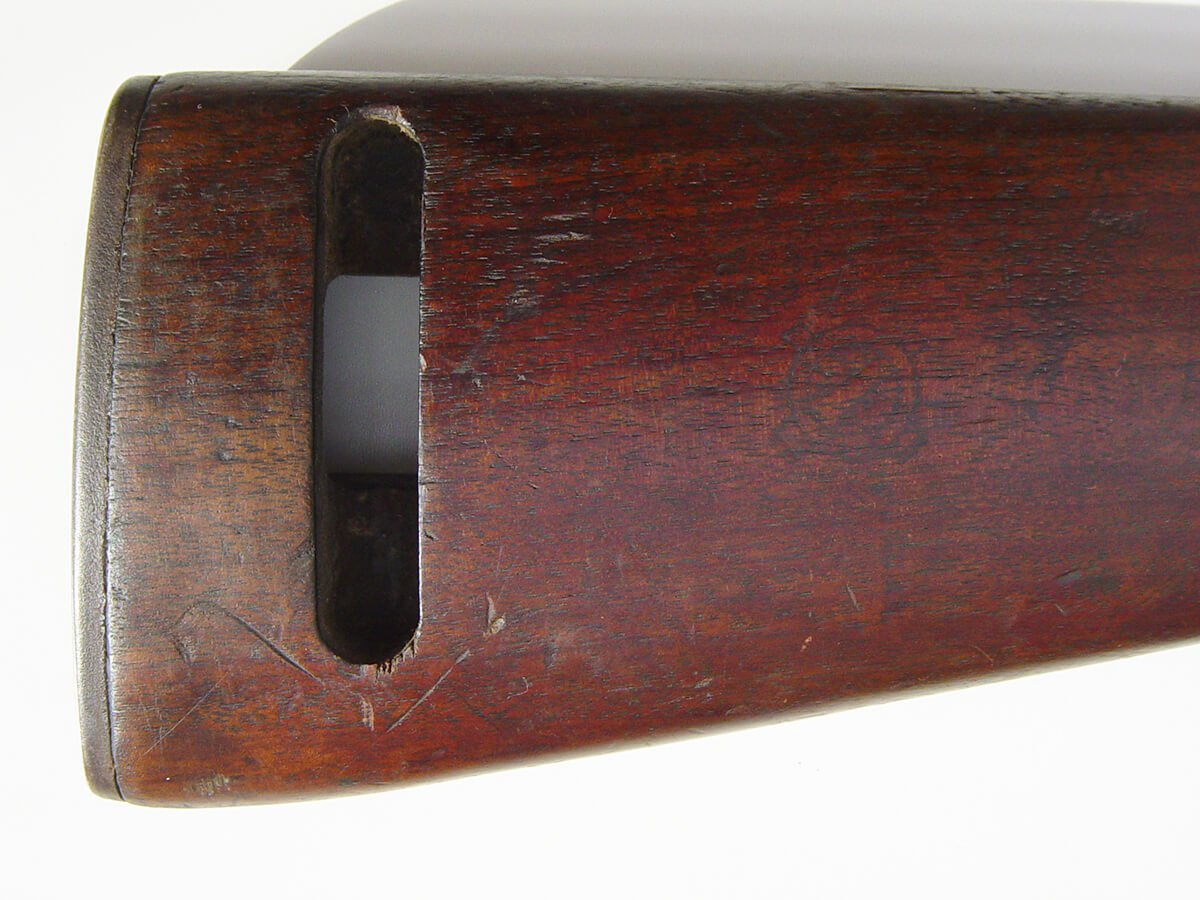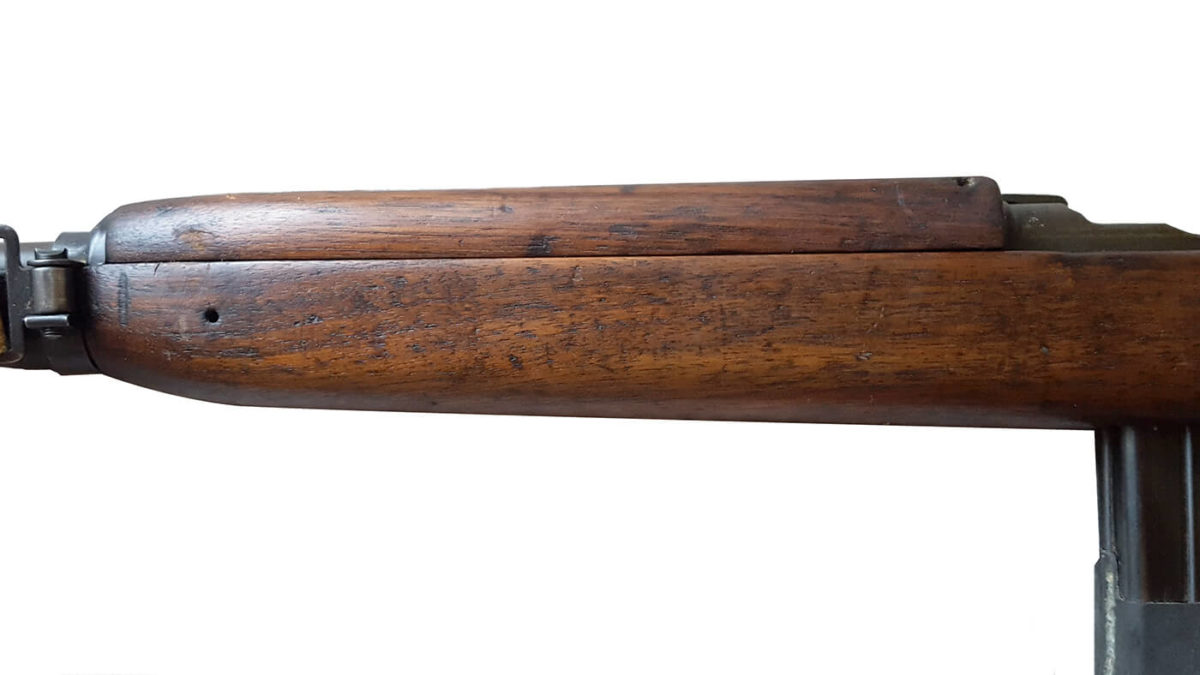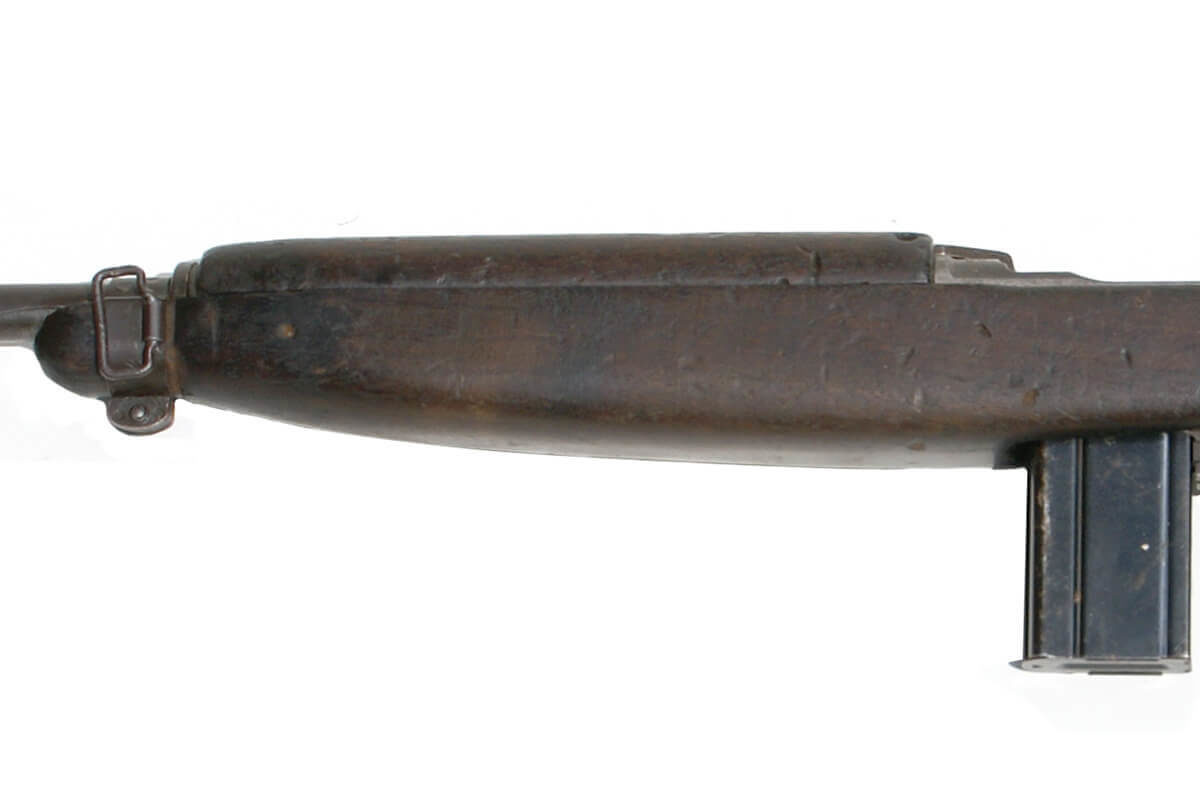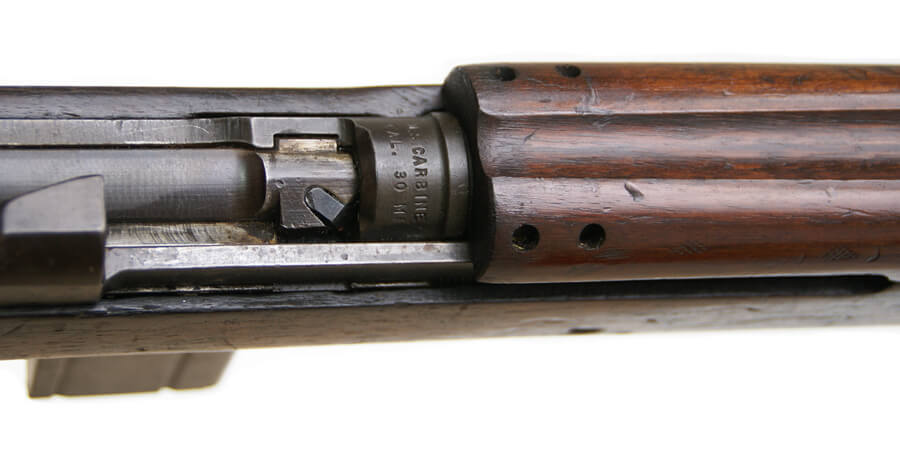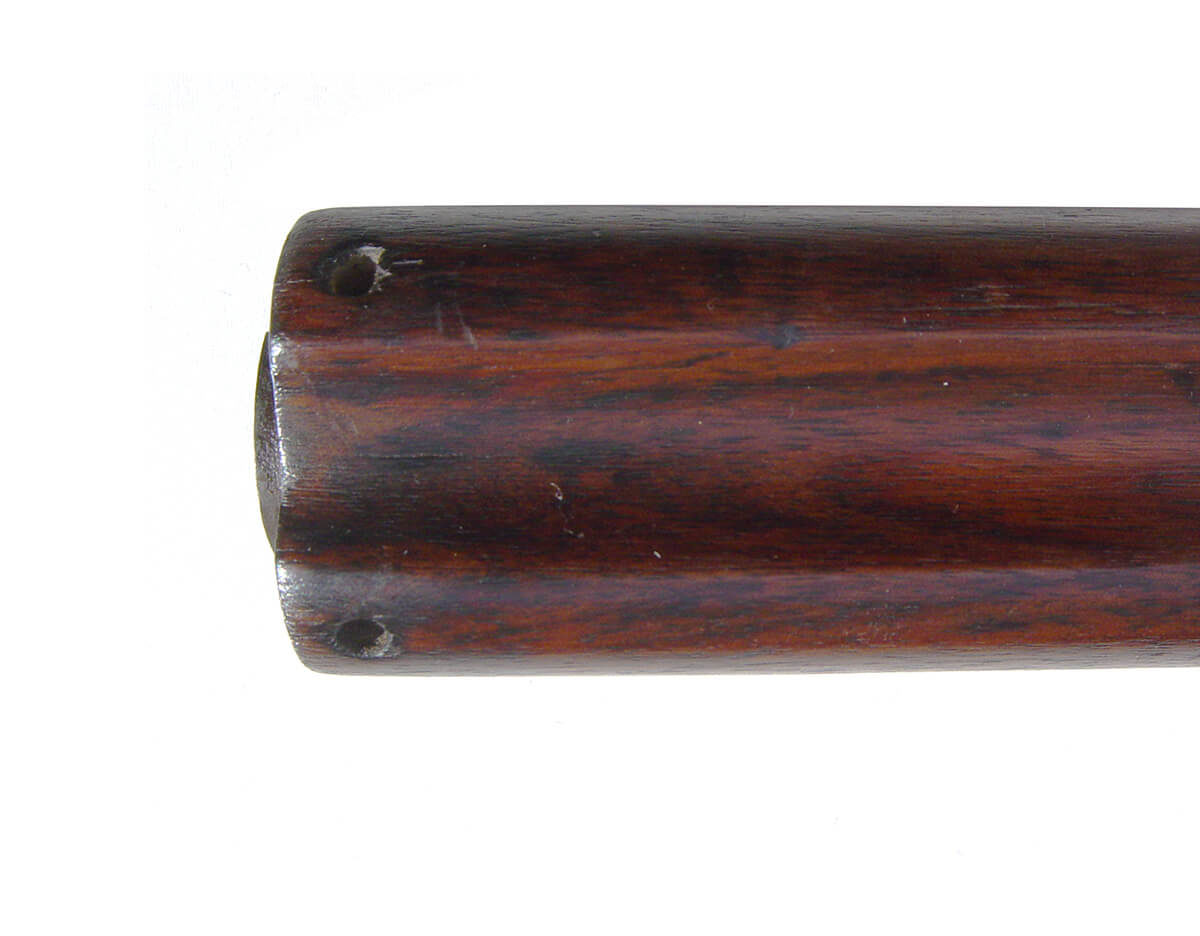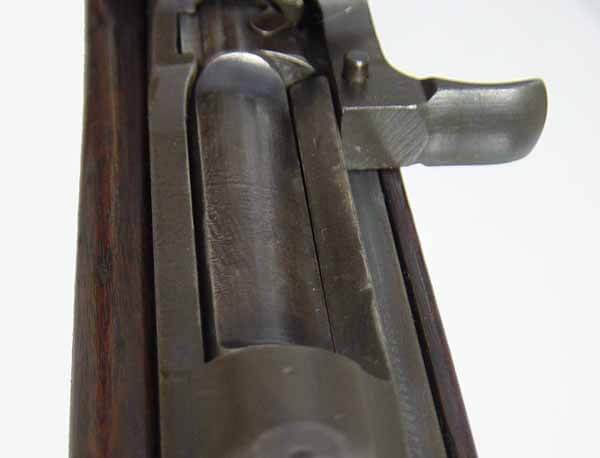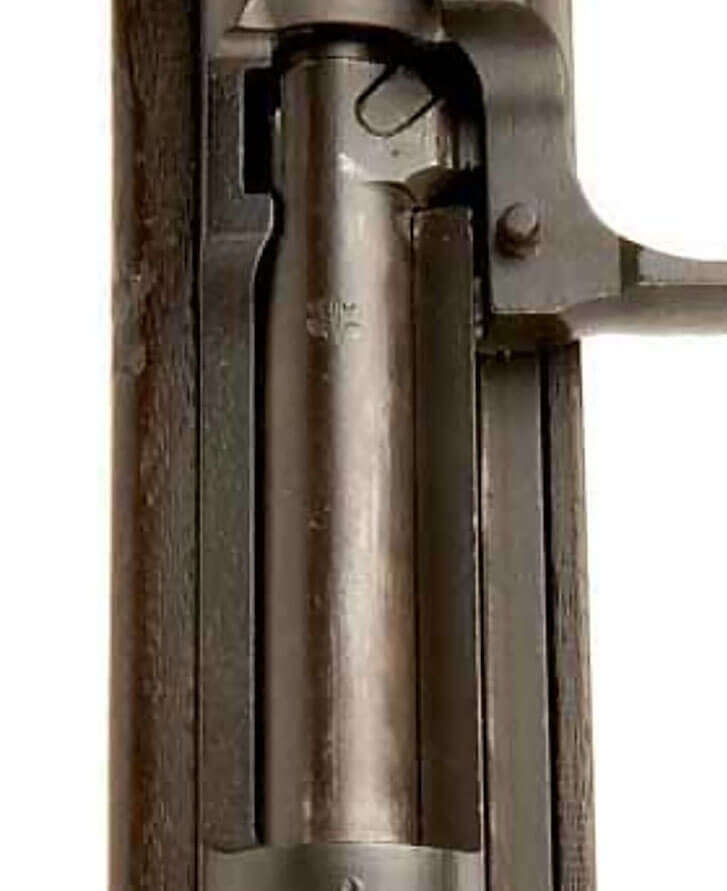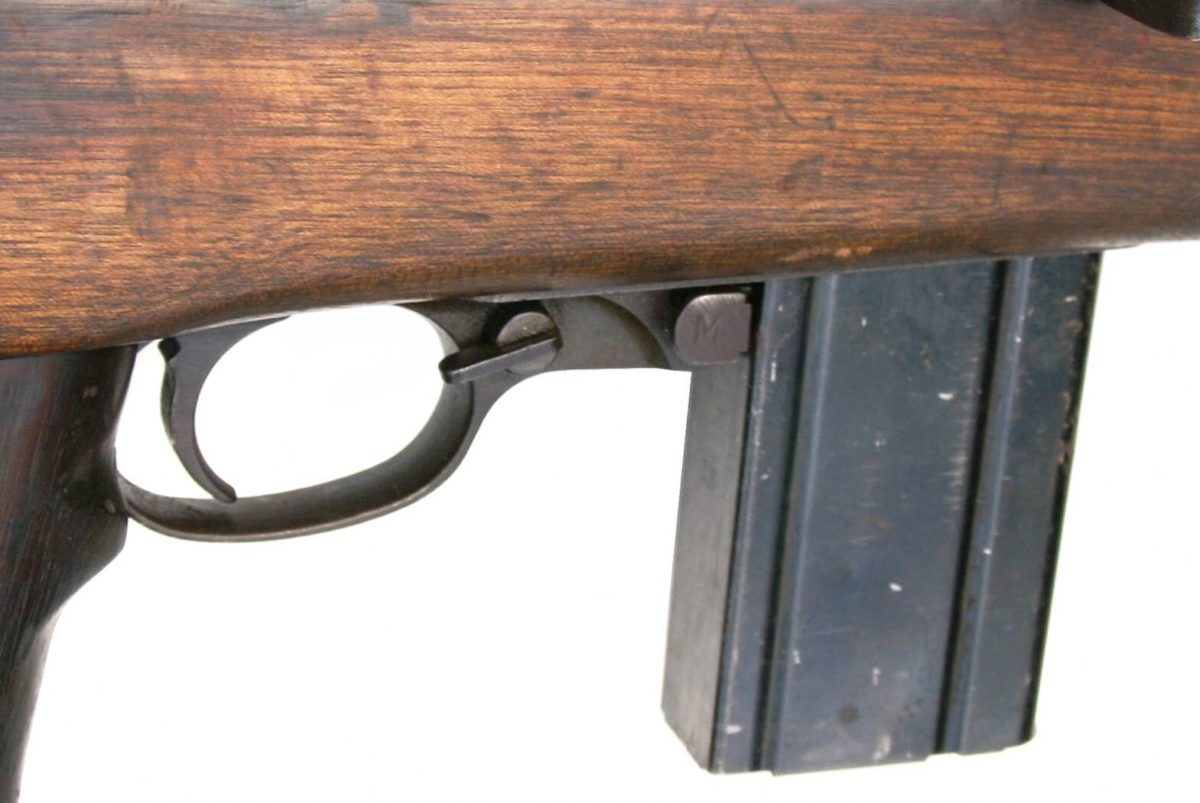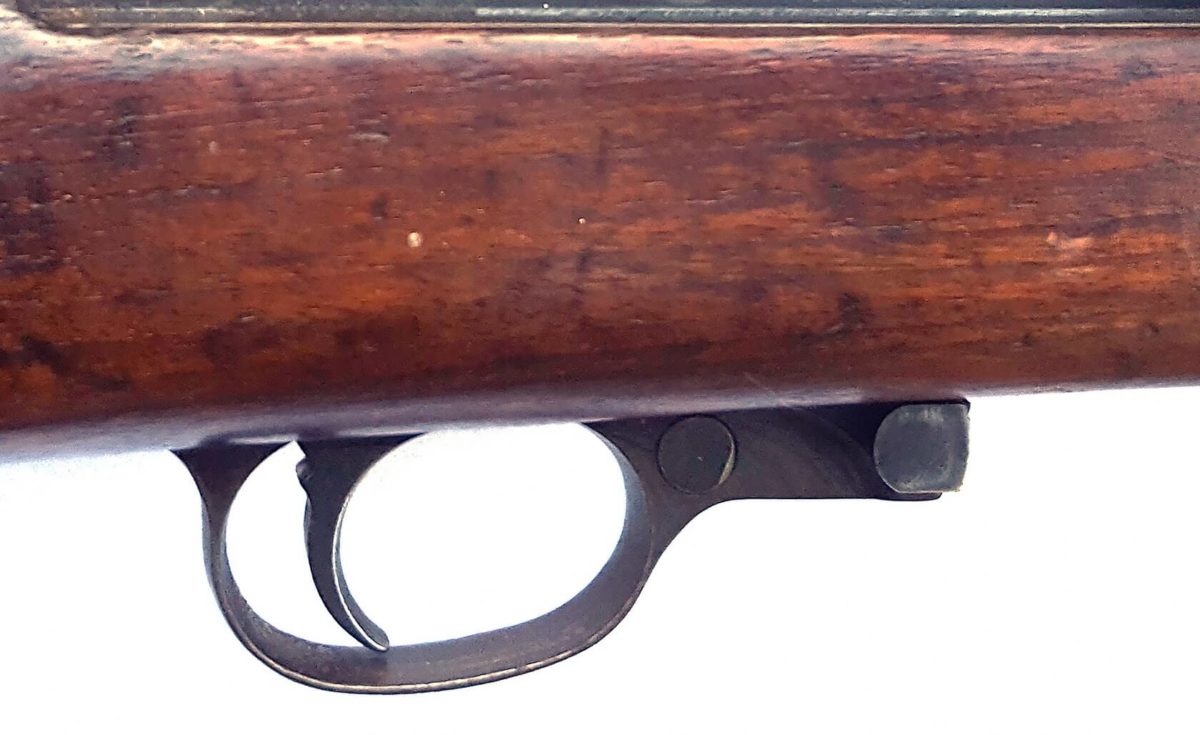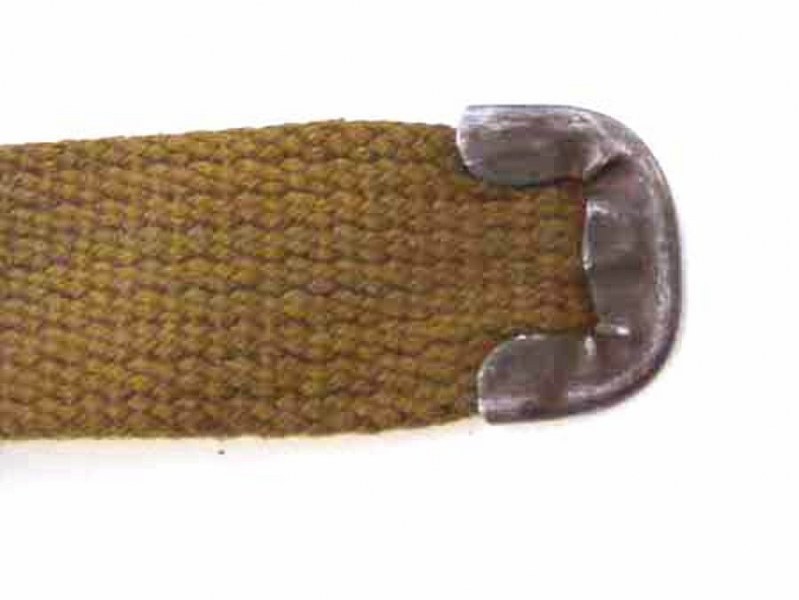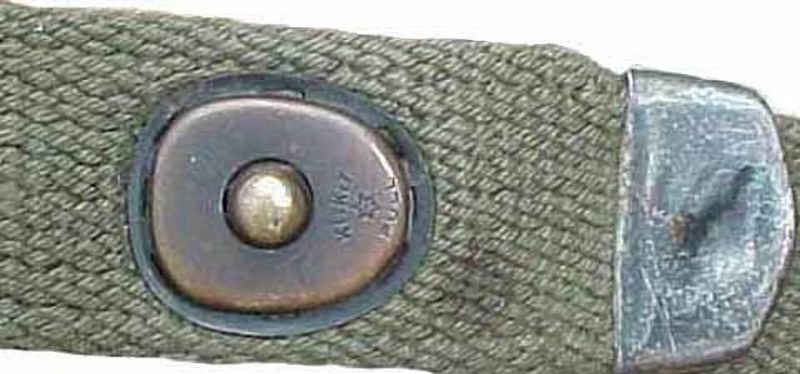Collecting the M1 carbine
There were 10 main manufactures of the US GI wartime M1 carbine. Models made by Universal Hialeah and Iver Johnson are post war commercial models. M1 carbines made by Universal, normally have the ventilated hand guard and modified bolt.
Springfield didn’t actually make WWII M1 carbines, but did take a large delivery of tooling and parts in 1944 as production slowed down. They were then one of the main armouries to overhaul M1 carbine production post war and any parts manufactured by Springfield carry an SA stamp. Springfield did manufacture M1 carbines starting in the mid 1990s and these carry an SCxxxx casting.
There are many different components used on the wartime US M1 carbine. Each Manufacturer would use different components and change production at different times. Without going into endless detail, here are some of the main things to look out for, between early and late production M1 carbines.
The Rear Sights
The original WW2 produced rear L-type or ‘flip’ site had no adjustment for windage and had only two elavation settings of 100 or 300 yards.
These were replaced towards the very end of the war by the adjustable sights (milled and stamped) and only by only some manufacturers. Period pictures of M1 carbines with the later adjustable sights are extremely rare, with most M1’s having their sights upgrade to the later adjustable model, post war.
The Barrel Band
There are three types of barrel band for the M1 carbine.
Type 1
The type 1 was the model fitted on the vast majority of WW2 carbines. This consisted of a narrow band retained by the band spring. This band did not always secure the barrel to the stock.
Type 2
The type 2 band was fitted to some late war M1 carbines, around mid 1944. It was an improvement in that it had a larger surface area and was not nearly as often seen as the type 1 band, and was replaced by the type 3.
Type 3
The type 3 band was identical to the type 2 with addition of a bayonet lug. This late type 3 barrel band was introduced in 1945 towards the very end of WW2, the vast majority of M1 carbines having their barrel bands upgraded to type 3 after 1945.
The stock
The stock has been classified by collectors into 3 types:-
type 1 – early stocks with high wood and I-cut oiler recess
type 2 – mid war stock with high wood and oval oiler.
type 3 – late stock with low wood and oval oiler
Early M1 carbines had what has become know as “high wood” stocks. This referred to the area of wood covering the operating handle. As this area of wood was quite thin and often became damaged, the area was reduced on later M1 carbines and became what is known to collectors as “low wood” stock. Low wood stocks were introduced in early 1944 by most manufactures.
Very early stocks had what was known as an “I cut” recess. This was intended for an oiler that was never adopted on the M1 carbine. Later stocks had the more common oval shaped oiler recess.
The shape of the stock was also to change on type 3 stocks. Early M1 carbines had a flatter straight stock. The late production M1 carbines had a shaped “pot belly” stock.
The Handguard
There are two basic differences in the M1 carbine handguard. The early handguard had two rivets while later variations had four. The later four rivet handguard was introduced early 1945 by most manufacturers.
The Bolt
The bolt on all early to mid production M1 carbines have a flat top. In order to save time in production, later M1 carbines, from mid 1944 onward, utilised a round top bolt, which meant less machining. It should be noted, that all WWII production M1 carbine bolts were blued and not parkarized.
The Safety
The safety on early M1 carbines, used a push button method. This proved to be unsatisfactory, as it was closely located to the magazine release and of the same operation, but did remain in production till very late in the war, when replaced with a rotary style safety. This was then commonly retro-fitted to most M1 carbines.
The Sling
Lastly, a quick note on M1 carbine slings. All WWII carbine slings have a horseshoe shaped metal tab. The material was a light coloured khaki in the early war years and turned to a darker olive green later. Post WWII slings used a solid style tab. The colour of the material was dark olive green and the pattern of the weave changed subtlety.
Continue reading
The M1 carbine – A brief history

